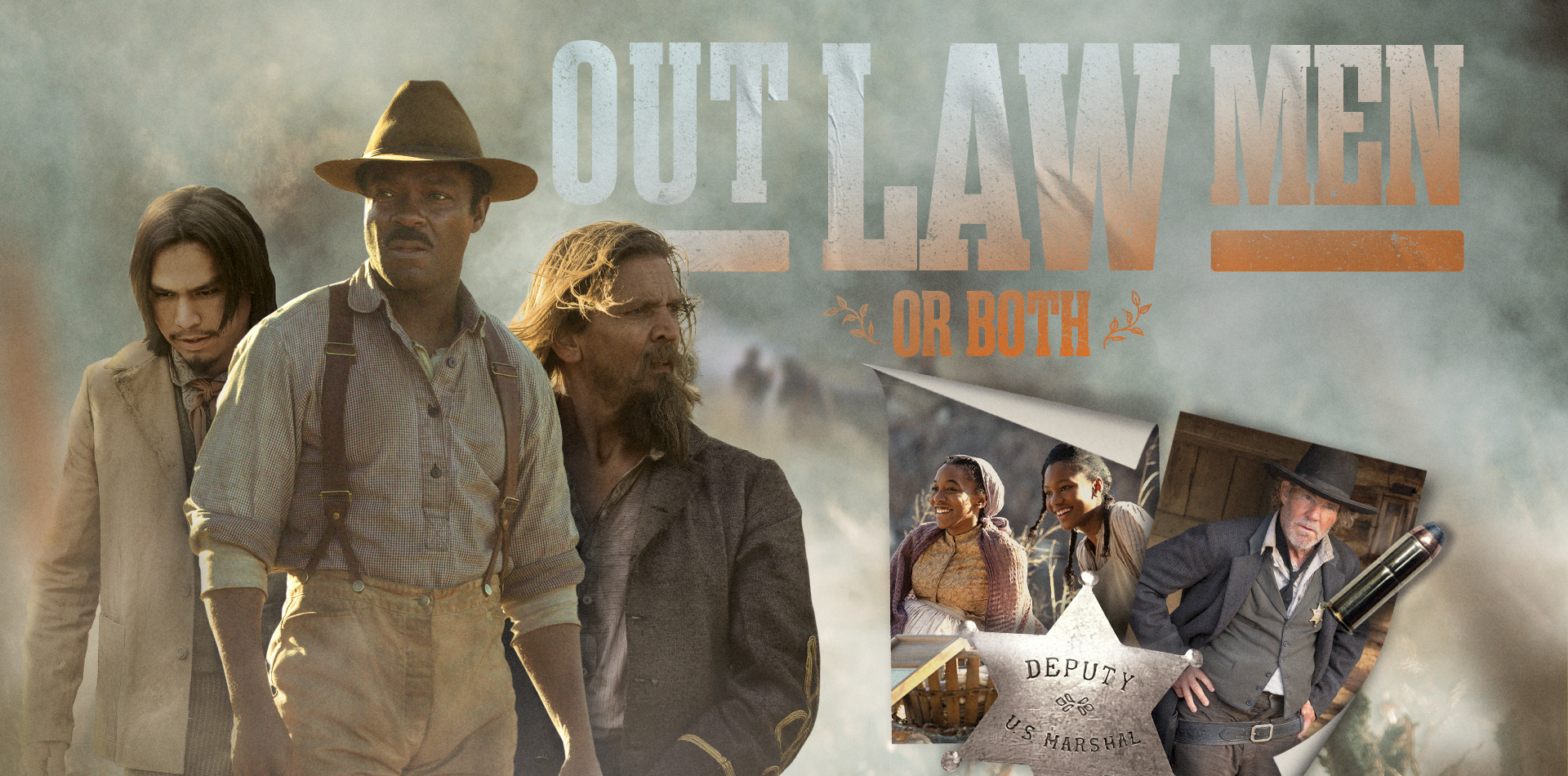By Bonnie Nipar | January 16, 2024
Out Law/Law Men or Both
Costume Designer: Isis Mussenden
Opening with stirrups jangling and cannons exploding, the Battle of Pea Ridge was the fight that forced the Confederacy to give up the West. Its authenticity is brilliant, but heartbreaking. “That scene nearly killed us,” says Isis Mussenden, costume designer for Lawmen: Bass Reeves. “It was a movie unto itself.” It is no wonder—with 300 Union and Confederate soldiers, 50 Confederate Cherokee soldiers, 129 stuntmen, and 80 horses on the first day of shooting.
From executive producers Taylor Sheridan, David Oyelowo, and Chad Feehan, it relates the untold story of the first Black Deputy U.S. Marshall west of the Mississippi River. Lead actor Oyelowo became obsessed with Reeves’ legendary life and bought the property rights to the frontier hero in 2014. He and writer/creator Feehan took it to 101 Studios, where Sheridan thought it was a good fit to stream on Paramount+. They filmed the eight-episode anthology series 40 miles outside Fort Worth at Sheridan’s Silverado Ranch. At over 140 acres, unobstructed by modern buildings or wires, the expansive property was a perfect location to shoot the 1860s through 1870s, and it provided horses and wranglers.














Mussenden is a big believer in reading, not just looking at photographs. She also believes in using fellow costume designers as part of her team. “I never designed a Western before, so I had to start my research from scratch,” she reveals. “I began with the Civil War using Time-Life’s The Old West encyclopedia that I borrowed from my friend, costume designer Kimberly Adams. I hired costume designer Christine Cantella for three weeks to visit all the museums in Texas and take photos.” Additional research included combing through digital libraries.
With no cast other than Oyelowo and a short prep time, Mussenden and her assistant costume designers Amelia McKinney and Jacqueline Martinez rushed to build a stock of lawmen and bandits in general sizes. They needed 30 sets of jacket, vest, shirt, pant, and coat times four multiples to cover the actor, a stuntman, a hero that is never worn, and one for insurance. At the end of the day, production extended from six to eight episodes and pushed two months, giving them time to build stock for all the day players. The volume of work necessitated construction at many different costume houses. The team also pulled every available period piece from rental houses for background.
Oyelowo’s costumes, or at least the hero and the one he wore, were custom-made, including his hats and boots. Reeves entered the war as a body man, something like a valet, to his officer master. His waist-length Confederate coat indicated his enslavement. After his emancipation, Reeves begins as a poor farmer, mostly in vintage henleys with suspenders, then becomes comfortably wealthy, as lawmen were generously paid. Mussenden had fabric woven for him by Rabbit Goody at Thistle Hill Weavers, known for producing historically accurate fabrics. She used an abundance of textures in Reeves’ clothing and incorporated color whenever possible.
Most of the lead actors’ costumes were made to order, including Sherrill Lynn (Dennis Quaid), who looks like a quintessential lawmen in a darkish suit and black tie, and “Hanging” Judge Parker (Donald Sutherland), who wore mostly judicial black punctuated with white shirts. Three prominent women are in the series. Reeves’ wife, Jennie (Lauren E. Banks), is tall and stunning, even when poor in simple cotton dresses, but is elegant and tastefully refined as her husband becomes more affluent. Daughter Sally (Demi Singleton) dresses like a mini version of Jennie, evoking a mother-daughter bond, and Jennie’s cousin Esme (Joaquina Kalukango) is the complete antithesis. “She’s like an over-designed chair—a style that was popular in the 1870s,” quips Mussenden who relished the contrast of the two women.









The workroom spent weeks making beautiful garments, jewelry, and feathers for the Indigenous people. The script describes Billy Crow (Forrest Goodluck) as a peacock. In his floral shirts, bright orange neck-scarf, and leather leg gaiters with horsehair toggles and trim down the sides, he’s her hipster. “I learned the power of silhouettes while designing animation,” notes Mussenden, “and used it when I selected a bowler hat for him.”
Mussenden was fascinated by the dichotomy between the Union soldiers, who wore regulation uniforms due to the North’s resources, and the ragtag Confederate Southern Theater in Arkansas, who were the poorest of the Civil War fighters. If you had a jacket and a kepi cap, you were a soldier. The rest of their uniform was personal or pieces taken from fallen soldiers. This allowed Mussenden to make imaginative design choices, even mixing in some calico prints. She hired costume designer Harlan Glenn as her Civil War technical advisor, overseeing the procurement, dressing, and shooting of the war scenes. The down-and-dirty look was achieved by head ager/dyer Shel Bauman. “He was brilliant and took a lot of pride in his work,” says Mussenden. “On a Western, you just can’t spend enough money on aging. I was so proud of the amazing team of passionate people in all departments who made this story come to life. As David Oyelowo said, ‘Bass Reeves was an extraordinary man who lived an extraordinary life at an extraordinary time in American history.’”



